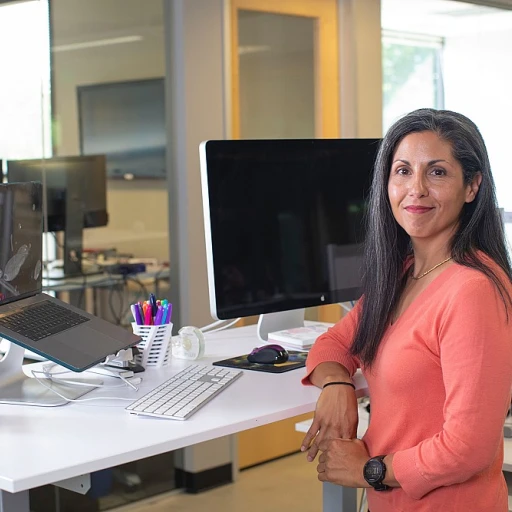
Understanding the skills gap and its impact on job seekers
Why the Skills Gap Matters for Job Seekers
The skills gap is a growing concern in many communities, including the Austin neighborhood in Chicago. It refers to the mismatch between the skills employers need and the abilities job seekers currently have. This gap can make it difficult for residents to access good jobs, especially in industries like construction, health, and innovation. For people in the Austin community, the challenge is not just about finding work, but about finding meaningful employment that offers stability and growth.
Impact on the Austin Community and Beyond
When local residents lack access to workforce training and development, the entire community feels the effects. Unemployment rates can rise, and economic opportunities may be limited. The shuttered Emmet Elementary building, now the site of the Aspire Center for Workforce Innovation, is a symbol of both the challenges and the potential for change in the area. With support from organizations like the Westside Health Authority and the Johnson Collaborative, the Aspire initiative is working to turn this former school into a hub for workforce development and training.
- Many job seekers in Austin face barriers such as outdated skills, lack of access to quality training, and limited support services.
- Workforce innovation projects, like the Aspire Center, aim to bridge these gaps by offering targeted programs and resources.
- Community-driven efforts are essential for building a stronger, more resilient workforce in Chicago and beyond.
Understanding the skills gap is the first step for anyone looking to improve their career prospects. Whether you are a recent graduate, someone returning to the workforce, or looking to change industries, knowing what skills are in demand can help you plan your next move. For those interested in further education, resources like crafting a compelling dental school personal statement can provide valuable guidance on how to stand out in competitive fields.
As the Aspire Center for Workforce Innovation continues to develop, it will offer new opportunities for Austin residents and the wider Chicago community. The goal is to create a space where workforce training, mentorship, and real-world experience come together to support long-term success.
Barriers faced by individuals in bridging their skills gap
Challenges That Stand in the Way of Skill Building
For many Austin residents and the broader Chicago community, the journey to workforce development is filled with obstacles. The skills gap is not just about missing technical abilities; it’s shaped by a mix of social, economic, and educational barriers that make it difficult for individuals to access workforce training and development services.- Limited Access to Training: Many in the Austin community, especially those near shuttered Emmet Elementary or the west side, face a lack of nearby workforce innovation centers or affordable training programs. This makes it hard to gain new skills or keep up with changing industry demands in fields like construction, health, and innovation.
- Financial Constraints: The cost of workforce training, certification, or even transportation to a center can be a major hurdle. Without support, many aspiring workers are unable to invest in their own development.
- Awareness and Guidance: Some residents are not aware of the services and support available through initiatives like the Aspire Center for Workforce Innovation or the Johnson Collaborative. Others may not know how to plan their career path or identify which skills are most in demand.
- Educational Gaps: Gaps in foundational skills, such as math, can hold people back from advancing in workforce training or qualifying for jobs in growing sectors. For those interested in mastering workplace readiness, understanding overtime and percentages is essential. For more on this, see mastering math for workplace readiness.
- Community-Specific Needs: The needs of Austin coming projects, such as the Aspire initiative or the Westside Health Authority, are unique. Residents may require tailored support that addresses both the local job market and the realities of living in the west side of Chicago.
How the aspire center for workforce innovation supports skill development
Comprehensive Services for Workforce Development
The Aspire Center for Workforce Innovation is a cornerstone for workforce development in the Austin community and greater Chicago area. Its mission is to bridge the skills gap by offering a range of services and support tailored to local residents, especially those impacted by economic shifts and the closure of facilities like the shuttered Emmet Elementary. The center works closely with community partners, including the Westside Health Authority and the Johnson Collaborative, to ensure that workforce training is accessible and relevant.
Through a combination of training programs, career development workshops, and direct support, the Aspire initiative addresses the unique needs of Austin residents. The center’s approach is rooted in understanding the barriers individuals face, such as limited access to quality education or a lack of exposure to in-demand industries like construction and health services. By collaborating with organizations like Block Club Chicago and leveraging resources from the Austin Coming Together network, the Aspire Center helps residents build practical skills that align with current workforce needs.
- Personalized workforce training: The center workforce team develops customized training plans for participants, ensuring that each person’s learning journey is aligned with their career goals and the needs of the local job market.
- Community-driven support: The Aspire Center partners with local schools, such as the former Emmet Elementary and Lamar Johnson Elementary School, to create pathways from school to career, fostering a culture of lifelong learning and innovation.
- Access to real-world experience: Residents gain hands-on experience through partnerships with local employers and organizations, preparing them for immediate entry into the workforce.
By focusing on both immediate and long-term workforce needs, the Aspire Center for Workforce Innovation is helping to build a stronger, more resilient Chicago community. The center’s commitment to innovation and collaboration ensures that Austin residents have the tools and support they need to succeed in a changing job market. For those interested in understanding the broader impact of workforce development initiatives, exploring the cost of reviewing severance packages can provide additional context on the importance of closing the skills gap.
Personalized learning paths and mentorship opportunities
Tailored Pathways for Every Learner
The Aspire Center for Workforce Innovation recognizes that every individual’s journey to skill development is unique. In the heart of the Austin community, the center offers personalized learning paths that reflect the diverse backgrounds and goals of Chicago residents. Whether someone is seeking a career change, returning to the workforce, or building on existing skills, the Aspire initiative ensures that training and support are relevant and accessible.Mentorship: Guiding Growth and Confidence
Mentorship is a cornerstone of the Aspire Center’s approach. By connecting participants with experienced professionals from the local workforce, the center provides guidance that goes beyond classroom learning. These mentors help residents navigate challenges, set realistic goals, and stay motivated throughout their development journey. This support is especially valuable for those transitioning from school or seeking new opportunities in fields like construction, health, or community services.- Mentors share real-world insights from sectors such as workforce development, health authority, and construction projects in the West Side.
- Personalized feedback helps participants refine their skills and adapt to the demands of the Chicago community job market.
- Mentorship networks foster a sense of belonging and connection, especially for those from shuttered Emmet Elementary or other local schools.
Flexible Plans for Sustainable Progress
The Aspire Center’s learning plans are designed to fit the realities of Austin residents’ lives. With flexible schedules, hybrid training options, and ongoing support, participants can balance skill development with family, work, or other commitments. The center workforce team collaborates with organizations like the Westside Health Authority and Johnson Collaborative to ensure that services are comprehensive and community-driven.- Customized plans address specific barriers, such as access to technology or transportation.
- Support services include career counseling, resume workshops, and job placement assistance.
- Ongoing evaluation ensures that each plan evolves with the participant’s progress and changing goals.
Real-world training and hands-on experience
Learning by Doing: The Power of Practical Experience
For many Austin residents and members of the wider Chicago community, the journey from school to a sustainable career can feel uncertain. The Aspire Center for Workforce Innovation recognizes that classroom learning alone is not enough. Real-world training and hands-on experience are essential for bridging the skills gap and preparing individuals for in-demand roles. The center’s approach to workforce development is grounded in practical application. Through partnerships with local organizations, including health authorities and construction projects, participants gain exposure to real work environments. This is especially important in sectors like construction, health, and innovation, where technical skills and adaptability are critical.- On-site training: Programs are hosted at locations such as the shuttered Emmet Elementary and other community buildings, transforming them into active learning hubs.
- Project-based learning: Residents work on actual projects, from building renovations to health initiatives, supported by the Aspire initiative and the Johnson Collaborative.
- Collaboration with local employers: The center workforce team connects participants with businesses in the Austin community and across Chicago, ensuring that training aligns with current workforce needs.
Measuring progress and achieving career goals
Tracking Growth and Success in Workforce Training
Measuring progress is essential for anyone participating in workforce development programs, especially in a dynamic community like Austin. The Aspire Center for Workforce Innovation uses a combination of practical tools and community-driven feedback to ensure that residents are truly building the skills needed for today’s job market.- Clear Milestones: Each training plan is broken down into achievable steps. Whether someone is learning construction, health services, or another in-demand field, the center helps participants set realistic goals and track their advancement.
- Regular Assessments: Through hands-on projects and real-world scenarios, participants can see their progress in action. This approach, supported by the Aspire initiative, ensures that learning isn’t just theoretical—it’s directly connected to workforce needs in the Austin community and beyond.
- Community Support: The Aspire Center partners with local organizations, including the Westside Health Authority and the Johnson Collaborative, to provide ongoing support. This network helps residents stay motivated and connected, whether they’re training at the shuttered Emmet Elementary site or engaging with workforce services at the center.
- Feedback Loops: Regular check-ins with mentors and trainers help participants adjust their learning paths. This personalized support is a key part of the Aspire Center’s approach, ensuring that each individual’s development plan stays relevant as job markets evolve.












